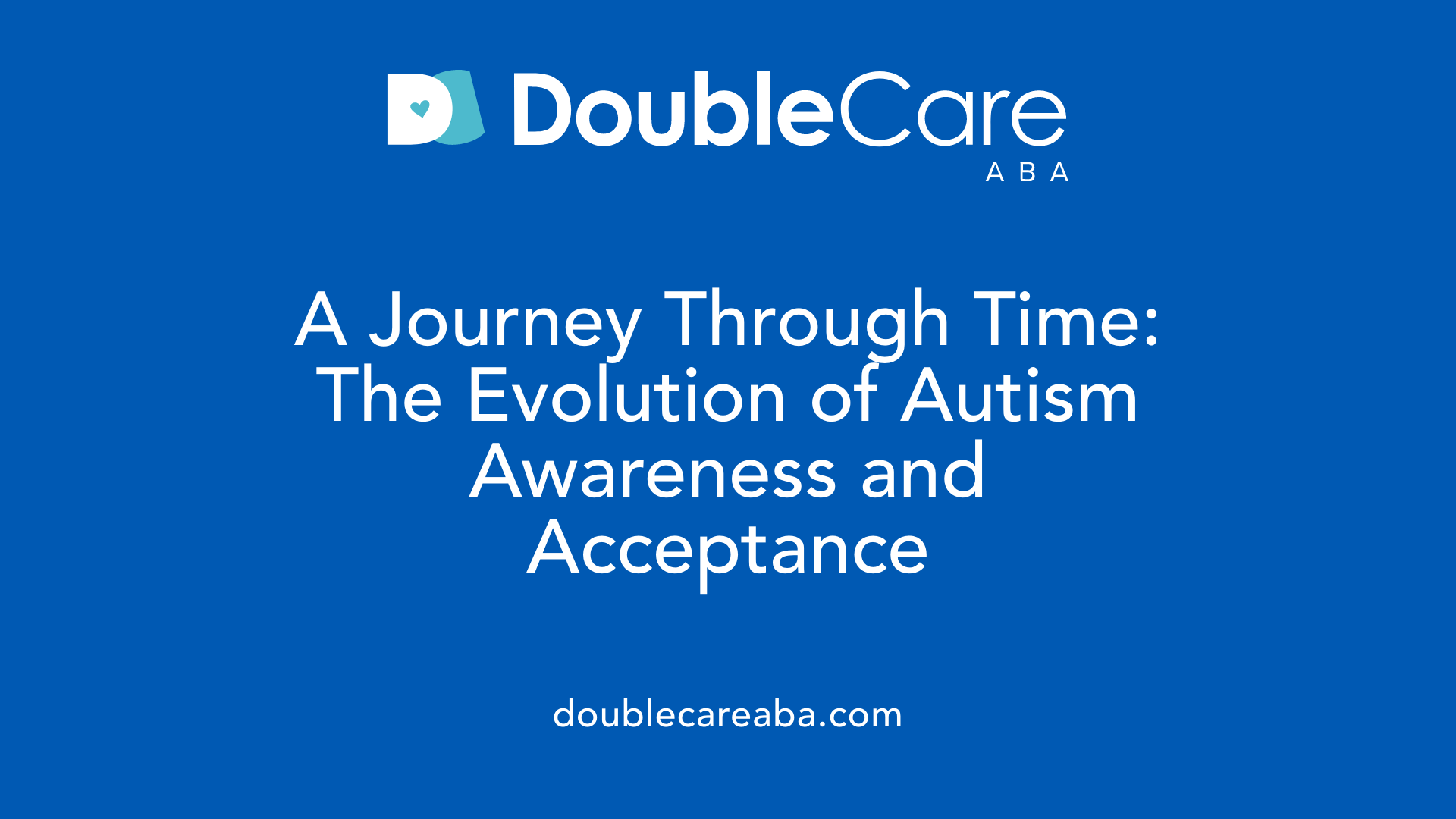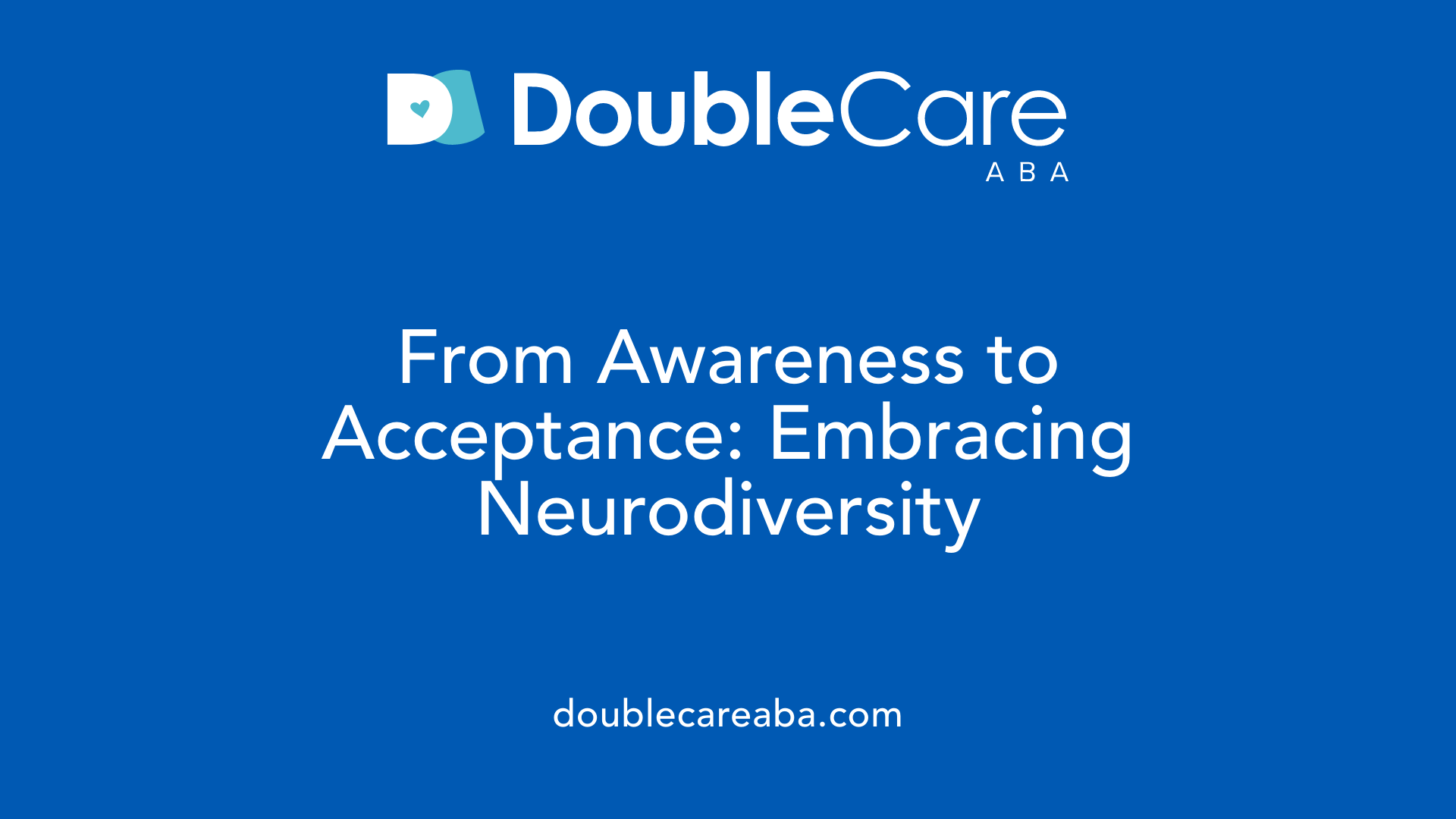Understanding the Significance of Autism Awareness and Acceptance
April marks a pivotal time in advocating for individuals with autism spectrum disorder (ASD), with Autism Awareness Month shining a spotlight on understanding, acceptance, and inclusion. Originating over 50 years ago, this month-long observance has evolved to emphasize not only raising awareness but fostering societal acceptance of neurodiversity. From global campaigns to local community efforts, April serves as a dedicated period to celebrate talents, challenge stereotypes, and promote supportive environments for all. This article explores the history, symbols, activities, and ongoing initiatives that make Autism Awareness Month a vital movement towards a more inclusive world.
Historical Evolution of Autism Awareness and Acceptance

What is Autism Awareness Month and why is it important?
Autism Awareness Month, originally established in 1970, serves as an essential period for educating the public about autism spectrum disorder (ASD). It aims to highlight the challenges faced by autistic individuals, promote early diagnosis and intervention, and foster a community of understanding and support.
The organization behind this movement, including reputable groups like Autism Speaks and the Autism Society of America, undertakes various activities such as public campaigns, fundraising events, and educational outreach during this month. Notably, the 'Light It Up Blue' campaign launched by Autism Speaks in 2004 has become a globally recognized symbol to raise awareness. Additionally, the United Nations designated April 2nd as World Autism Awareness Day in 2008, emphasizing the international significance of this observance.
Over the years, the perception of this month has evolved. Initially rooted in raising awareness of autism as a condition, the focus shifted towards acceptance and inclusion in 2021, reflecting a deeper understanding of autism as a natural form of human diversity. Major organizations now emphasize fostering respect, understanding, and full community participation for autistic individuals.
Key milestones in this evolution include the introduction of symbols like the Puzzle Piece in 1963, representing hope and unity, and the widespread adoption of the 'Light It Up Blue' campaign, which illuminates landmarks worldwide to show support. These initiatives have increased visibility and understanding.
How has the movement grown globally?
From its origins in the United States, the movement expanded internationally, with many countries observing April as Autism Awareness and Acceptance Month. The UN's recognition has further reinforced global efforts to promote early diagnosis, celebrate diversity, and advocate for accessible services.
Many advocacy groups now actively participate in worldwide campaigns, sharing personal stories, resources, and strategies for inclusion.
How has the focus shifted over the years?
Initially centered on raising awareness of autism as a medical condition, the movement has transitioned toward celebrating neurodiversity and promoting acceptance.
This shift was driven by autistic individuals and advocacy groups who emphasized that autism is a natural variation of human identity, advocating for respectful treatment and community integration.
In 2021, many organizations officially adopted the term 'Autism Acceptance Month,' signaling this change in perspective.
Significant symbols and campaigns
| Symbol / Campaign | Year | Purpose | Significance |
|---|---|---|---|
| Puzzle Piece | 1963 | Autism awareness | Represents hope and unity |
| Light It Up Blue | 2004 | Awareness | Illuminates landmarks worldwide |
| 'Autism Is' Campaign | 2024 | Inclusion | Highlights diverse experiences |
| Road to Acceptance | 2024 | Sharing stories | Promotes understanding |
These symbols and campaigns have helped to personalize the movement, emphasizing that autism is about individual identities, strengths, and stories.
Overall, the history of Autism Awareness and Acceptance Month illustrates a growing recognition of the importance of diversity, community support, and respectful inclusion. It continues to evolve, aiming for a future where autistic individuals are fully embraced and supported in all aspects of society.
Symbols, Colors, and the Power of Visual Advocacy

What are the symbols and colors associated with Autism Awareness Month?
The most recognizable color associated with Autism Awareness Month is blue. This color symbolizes peace, honesty, and calmness, and is used extensively to show support for individuals with autism. During April, many advocates and organizations encourage the public to wear blue to promote understanding and dispel stereotypes. One of the most prominent campaigns is "Light It Up Blue," which was launched by Autism Speaks in 2004. This initiative encourages individuals, businesses, and landmarks worldwide to illuminate buildings, bridges, and landmarks with blue light, especially on April 2nd, which is World Autism Awareness Day.
The act of wearing blue and sharing photos online in the hashtag #LightItUpBlue has become a powerful way to start conversations about autism. These visual displays of support not only raise awareness but also foster a sense of community and solidarity among autistic individuals and their allies.
In addition to color symbolism, the Puzzle Piece has served as a widely recognized emblem in autism advocacy. Introduced in 1963 by the National Autistic Society, the Puzzle Piece represents the complexity and diversity of the autism spectrum. It also stands for hope, strength, and the importance of connecting diverse communities to support those on the spectrum.
This combination of colors and symbols helps create a visual language that communicates acceptance, understanding, and inclusion. Utilizing these symbols during campaigns, events, and daily interactions cultivates a more supportive environment for autistic individuals worldwide.
Engaging the Community: How Participation Fuels Change

How can people participate in Autism Awareness Month?
Participation during Autism Awareness Month encompasses a wide range of activities aimed at fostering understanding, acceptance, and inclusion. Individuals can start by wearing blue, the signature color for autism support, during key dates like April 2nd to symbolize unity and awareness.
Sharing personal stories, educational content, and messages of acceptance on social media platforms plays a vital role. Using hashtags such as #AutismAcceptanceMonth or #LightItUpBlue helps amplify these stories and connect communities worldwide. These personal narratives raise awareness about autism's diverse experiences and promote empathy among a broader audience.
Attending local events, rallies, and educational workshops provides direct engagement with the community. Volunteering with organizations dedicated to autism advocacy supports their initiatives, whether through administrative help, event participation, or outreach activities.
Fundraising efforts, like charity walks, auctions, or online campaigns, are also crucial. They generate resources necessary for support services, research, and advocacy campaigns. Supporting autistic creators and businesses further encourages neurodiversity and inclusion in economic spaces.
The importance of social media campaigns and personal storytelling
Social media is a powerful tool during Autism Awareness Month. It allows individuals to share their experiences, challenges, and successes related to autism. This visibility helps break down stereotypes and misconceptions.
Personal stories can be transformative, fostering understanding that autism is a spectrum of unique identities. Campaigns like 'Autism Is' and 'Road to Acceptance' have utilized storytelling through videos and posts to humanize the autism community.
By sharing these stories, supporters help normalize neurodiversity, challenge stigma, and inspire acceptance in workplaces, schools, and communities.
Involvement of local organizations and advocacy groups
Local autism organizations and advocacy groups are at the forefront of community engagement. They coordinate events, educational programs, and outreach efforts to spread awareness and promote acceptance.
Many groups offer resources for families, educators, and employers to create more inclusive environments. They also organize campaigns and challenge stereotypes through initiatives like 'Light It Up Blue' and sensory-friendly events.
Supporting these organizations—whether through donations, volunteering, or sharing their initiatives—strengthens community bonds and advances the movement.
Participation in events like 'Light It Up Blue' and community outreach
Special events like 'Light It Up Blue' are integral to Autism Awareness Month. Public landmarks and buildings are illuminated with blue lights to symbolize autism support, inviting communities to join in the celebration.
Community outreach also includes hosting informational booths, film screenings, and art exhibits that showcase talent and stories from the autism community. Schools, businesses, and local governments often participate, fostering a climate of inclusion.
These activities not only raise awareness but also encourage ongoing dialogue, understanding, and acceptance, helping to integrate autistic individuals fully into society.
| Activity Type | How to Participate | Impact | Additional Notes |
|---|---|---|---|
| Wear Blue | Dress in blue, especially on April 2nd | Visual solidarity | Use social media to share photos wearing blue |
| Share Personal Stories | Post experiences, challenges, and successes | Humanizes autism and builds empathy | Use hashtags like #AutismAcceptanceMonth |
| Attend Events | Join local drives, workshops, and rallies | Direct engagement | Look for events coordinated by local autism groups |
| Fundraise | Support charity runs, auctions, online campaigns | Raises resources for support and research | Organize your own fundraiser if possible |
| Support Autistic Creators | Purchase, promote, and collaborate | Promotes neurodiversity in the economy | Find local businesses and artists |
| Use Social Media Campaigns | Participate in campaigns like 'Autism Is' | Broader awareness | Share stories and educational content |
| Join Community Outreach | Volunteer for local autism programs | Strengthen community bonds | Advocate for inclusive policies |
Everyone's involvement contributes significantly to shifting perspectives, reducing stigma, and building supportive communities. By participating actively, individuals help create a world that not only understands autism but truly accepts and embraces neurodiversity.
Shifting Perspectives: From Awareness to True Acceptance

What is the difference between autism awareness and autism acceptance?
Autism awareness and autism acceptance are related but distinct concepts that influence how society interacts with and understands autism. Awareness is primarily about increasing knowledge—sharing facts, symbols, and campaigns like lighting buildings blue or distributing informational materials to inform people that autism exists. Its goal is to make the public conscious of autism's existence and issues.
Acceptance, however, takes this a step further. It involves understanding autism as a natural variation of human diversity and embracing autistic individuals for who they are. Acceptance fosters an environment where autistic traits are respected, valued, and supported. It challenges stereotypes and prejudices, encouraging inclusion in all aspects of life—schools, workplaces, and communities—based on genuine respect and understanding.
While awareness can sometimes unintentionally reinforce stereotypes or evoke fear, acceptance encourages ongoing reflection and action that promote positive interactions and societal inclusion. Essentially, awareness is about knowing autism exists, whereas acceptance is about embracing and supporting autistic individuals as full members of society.
Why is acceptance more meaningful than awareness alone?
Acceptance resonates more deeply because it influences attitudes and behaviors in meaningful ways. Awareness campaigns can be fleeting or superficial, often focusing on information dissemination or symbolic gestures. These efforts, while important, do not necessarily translate into real change in attitudes or everyday experiences for autistic people.
Acceptance requires a commitment to understanding and valuing neurodiversity—recognizing the unique talents, perspectives, and challenges that come with autism. This shift fosters empathy, reduces stigma, and promotes supportive environments where autistic individuals can thrive.
For example, initiatives like Autism Speaks' 'Redefine Possible' aim to inspire acceptance by highlighting strengths and fostering inclusive attitudes. The Autism Society of America’s concept of 'Celebrate Differences' emphasizes the importance of respecting diversity within the autism community. Such approaches help deconstruct harmful stereotypes and promote societal change rooted in respect and genuine inclusion.
What are the societal benefits of embracing neurodiversity?
Embracing neurodiversity enriches society in multiple ways. It broadens perspectives, encourages innovation, and enhances social cohesion. When communities accept autistic individuals for who they are, they open doors for diverse talents and ideas that might otherwise be overlooked.
In workplaces, inclusive policies that support neurodiverse employees foster creativity and problem-solving. Educational institutions that embrace acceptance help autistic students succeed and develop confidence. Societies that prioritize acceptance promote mental health and well-being for autistic individuals, reducing feelings of isolation and alienation.
Public acceptance also leads to better support systems and resource allocation, ensuring that autistic individuals receive appropriate services, accommodations, and opportunities to participate fully in society.
The role of advocacy groups in promoting acceptance
Advocacy organizations like Autism Speaks and the Autism Society of America play pivotal roles in shifting public perception from mere awareness to true acceptance. They organize campaigns such as 'Autism Is' and the 'Road to Acceptance,' which highlight community stories and promote neurodiversity.
These groups also develop educational programs like Autism Friendly Training, designed with input from autistic individuals, to create more welcoming environments in public spaces. They advocate for policies and legislation that support full inclusion and access to resources.
Furthermore, these organizations work to address stereotypes and misinformation, foster community engagement, and amplify autistic voices—turning awareness campaigns into platforms for acceptance and societal change.
How acceptance improves self-esteem and societal inclusion for autistic individuals
Acceptance significantly impacts the mental health and self-esteem of autistic individuals. When society recognizes their unique strengths and needs, autistic people feel valued and respected, which boosts confidence and self-worth.
Inclusive attitudes reduce social stigmas, making it easier for autistic individuals to participate fully in social, educational, and professional activities. This sense of belonging fosters independence and personal growth.
In addition, societal acceptance helps to create environments where autistic individuals can express themselves freely without fear of discrimination or rejection. Schools, workplaces, and community spaces that emphasize acceptance provide supportive settings where neurodiversity is celebrated.
By shifting from awareness to acceptance, society paves the way for autistic people to live fulfilling, autonomous lives and to be recognized as vital, capable members of their communities.
| Aspect | Awareness | Acceptance | Impact |
|---|---|---|---|
| Focus | Information dissemination | Valuing and supporting neurodiversity | Societal attitudes and behaviors |
| Approach | Short-term campaigns | Ongoing, deep commitment | Inclusion, respect, understanding |
| Contribution | Raising consciousness | Promoting societal change | Improved well-being for autistic individuals |
| Societal Role | Warning; informational only | Building inclusive communities | Greater diversity and innovation |
This transformation from simply knowing about autism to actively accepting and supporting autistic individuals is crucial. It influences how communities grow, learn, and evolve, ensuring that everyone has the opportunity to thrive within a society that respects and celebrates diversity.
Fostering a More Inclusive Future
As Autism Awareness Month concludes, it leaves behind a renewed commitment to understanding, accepting, and celebrating the diversity of the autism spectrum. The movement from awareness to acceptance underscores the importance of creating environments where autistic individuals are respected, included, and empowered to thrive. By embracing neurodiversity and amplifying autistic voices, communities worldwide are taking vital steps toward a future where differences are not just recognized, but truly valued. Continued education, advocacy, and community involvement are essential to sustaining these efforts and fostering a culture of sensitivity, respect, and support for all.
References
- World Autism Month - Autism Speaks
- Autism Acceptance Month - Autism Society
- Autism Acceptance Month: Celebrate Differences - The Arc
- Autism Partner Toolkit | Autism Spectrum Disorder (ASD) - CDC
- Autism Acceptance Month: The History and Impact - Neurology Advisor
- World Autism Month FAQ
- Autism Acceptance Month 2025 - Cerebral Palsy Guide
- 5 Facts About Autism Awareness Month - Utah Parent Center
- Autism Acceptance vs Awareness: Is There a Difference?














